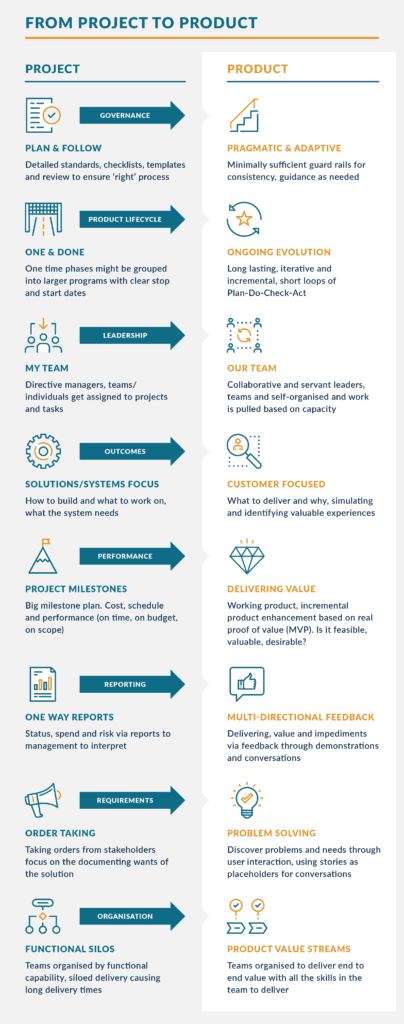Why Shift to Product?
Organisations are increasingly recognising the limitations of the traditional project-based approach and are instead shifting towards a product-centric model to effectively respond to the fast-paced business landscape. This transition is not merely a matter of semantics; it represents a fundamental reorientation towards sustainable value creation and customer-centricity.
The shift from projects to products represents a strategic imperative for organisations seeking sustainable growth, heightened customer satisfaction, and a competitive edge in today’s digital age. In a recent point of view, we highlighted that organisations that have pivoted to a product-centric operating model are outperforming their peers by 4x. By embracing a product-centric mindset, organisations can unlock new opportunities for innovation, agility, and value creation, laying the foundation for enduring success amidst constant market evolution…AI we see you.
The shift we need to make…
The transition away from a project-centric approach may present difficulties at first. Embracing a product-focused strategy entails a shift towards continuity. Products are nurtured and refined throughout their lifecycle until they reach maturity and eventual discontinuation.
Success is redefined, no longer solely contingent on meeting predetermined scope, time, and cost constraints, but rather on the ability of the product to effectively fulfil customer needs and align with business goals.
The key changes made when moving from project to product include….

If you’re still on the fence, here are 6 pillars of product power and why it pays to shift from project to product….
- Product focus ensures deep understanding of customer needs… leading to solutions that improve alignment with these needs, boost customer satisfaction, loyalty, and ultimately drive business growth.
- Products are designed for continuous evolution…. fostering lasting relationships with customers and stakeholders, driving sustained value creation.
- Product-centric organisations thrive on agility, leveraging iterative development methodologies …. enabling swift responses to market changes and staying ahead of the competition.
- Embracing a product mindset… cultivates a culture of ownership among teams, encouraging collaboration, sparking innovation, and instilling a shared dedication to the product’s success throughout its lifecycle.
- Products thrive on continuous optimisation and innovation… keeping them relevant and fostering a culture of learning and innovation within the organisation.
- Managing products as ongoing initiatives… allows for efficient resource allocation and utilisation, reducing duplication of work and enhance delivery efficiencies.
If you are interested in reading more on the topic of product and product value stream operating models:
